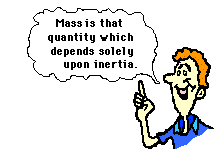Tugasan cuti sekolah tingkatan 4 terdapat dlm ruangan MODUL FORM 4.
Sila cetak modul tersebut dan mulakan tugasan anda dan hantar seminggu selepas cuti sekolah..
Selamat Berhomework kepada semua..
Physics Department SESERI
Saturday, 16 November 2013
Thursday, 2 May 2013
Sunday, 21 April 2013
Analysing Electromanetic Induction
Analysing Electromanetic Induction
Michael Faraday is generally credited with the discovery of induction in 1831 though it may have been anticipated by the work of Francesco Zantedeschi in 1829.[1] Around 1830[2] to 1832,[3] Joseph Henry made a similar discovery, but did not publish his findings until later.
Faraday's law of induction is a basic law of electromagnetism that predicts how a magnetic field will interact with an electric circuit to produce an electromotive force (EMF). It is the fundamental operating principle of transformers, inductors, and many types of electrical motors, generators and solenoids.[4][5]
The production of Induced EMF or induced current without using power supply but using relative motion between permanent magnet and currnet carrying conductor
There are two types of relative motion
1) moving conductor in a permanent magnet
The direction of the induced current can be determined by using FLEMING'S RIGHT HAND RULE
T
2) Moving Magnet in a Solenoid
The direction of induced current can be determined using LENZ'S LAW
Tuesday, 9 April 2013
Inertia And Mass
Inertia and Mass
 Newton's first law of motion states that "An object at rest stays at rest and an object in motion stays in motion with the same speed and in the same direction unless acted upon by an unbalanced force."
Newton's first law of motion states that "An object at rest stays at rest and an object in motion stays in motion with the same speed and in the same direction unless acted upon by an unbalanced force."Objects tend to "keep on doing what they're doing." In fact, it is the natural tendency of objects to resist changes in their state of motion. This tendency to resist changes in their state of motion is described as inertia.
Mass as a Measure of the Amount of Inertia
 All objects resist changes in their state of motion. All objects have this tendency - they have inertia. But do some objects have more of a tendency to resist changes than others? Absolutely yes! The tendency of an object to resist changes in its state of motion varies with mass.
All objects resist changes in their state of motion. All objects have this tendency - they have inertia. But do some objects have more of a tendency to resist changes than others? Absolutely yes! The tendency of an object to resist changes in its state of motion varies with mass.Mass is that quantity that is solely dependent upon the inertia of an object. The more inertia that an object has, the more mass that it has. A more massive object has a greater tendency to resist changes in its state of motion.
See the Inertia demonstration here:
The Negative Effect of Inertia
Principle of Conservation of Momentum
Principle of Conservation of Momentum
One of the most powerful laws in physics is the law of momentum conservation. The law of momentum conservation can be stated as follows.For a collision occurring between object 1 and object 2 in an isolated system, the total momentum of the two objects before the collision is equal to the total momentum of the two objects after the collision. That is, the momentum lost by object 1 is equal to the momentum gained by object 2.
Elastic And Inelastic Collision
Observed The Video Clip
Explosion
Momentum is a commonly used term in sports. A team that has the momentum is on the move and is going to take some effort to stop. A team that has a lot of momentum is really on the move and is going to be hard to stop.
Momentum is a physics term; it refers to the quantity of motion that an object has. A sports team that is on the move has the momentum. If an object is in motion (on the move) then it has momentum.
Momentum can be defined as "mass in motion." All objects have mass; so if an object is moving, then it has momentum - it has its mass in motion.
The amount of momentum that an object has is dependent upon two variables: how much stuff is moving and how fast the stuff is moving.
Momentum depends upon the variables mass and velocity. In terms of an equation, the momentum of an object is equal to the mass of the object times the velocity of the object.
In physics, the symbol for the quantity momentum is the lower case "p". Thus, the above equation can be rewritten as
Express your understanding of the concept and mathematics of momentum by answering the following questions. Click the button to view the answers.
1. Determine the momentum of a ...
2. A car possesses 20 000 kg ms-1 of momentum. What would be the car's new momentum if ...
Momentum is a physics term; it refers to the quantity of motion that an object has. A sports team that is on the move has the momentum. If an object is in motion (on the move) then it has momentum.
Momentum can be defined as "mass in motion." All objects have mass; so if an object is moving, then it has momentum - it has its mass in motion.
The amount of momentum that an object has is dependent upon two variables: how much stuff is moving and how fast the stuff is moving.
Momentum depends upon the variables mass and velocity. In terms of an equation, the momentum of an object is equal to the mass of the object times the velocity of the object.
Momentum = mass • velocity
In physics, the symbol for the quantity momentum is the lower case "p". Thus, the above equation can be rewritten as
p = m • v
where m is the mass and v is the velocity.
The equation illustrates that momentum is directly proportional to an object's mass and directly proportional to the object's velocity.
1. Determine the momentum of a ...
a. 60-kg halfback moving eastward at 9 m/s. b. 1000-kg car moving northward at 20 m/s.
c. 40-kg freshman moving southward at 2 m/s.
2. A car possesses 20 000 kg ms-1 of momentum. What would be the car's new momentum if ...
a. its velocity was doubled.b. its velocity was tripled.
c. its mass was doubled (by adding more passengers and a greater load)
d. both its velocity was doubled and its mass was doubled.
Answer
Subscribe to:
Posts (Atom)
































